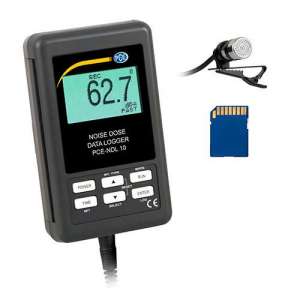Dosimeters
A radiation dosimeter is a device that measures exposure to ionizing radiation. Dosimeters usually record a dose, which is the absorbed radiation energy measured in grays (Gy) or the equivalent dose measured in sieverts (Sv). Radiation dosimetry
A radiation dosimeter is a device that measures exposure to ionizing radiation. Dosimeters usually record a dose, which is the absorbed radiation energy measured in grays (Gy) or the equivalent dose measured in sieverts (Sv). A personal dosimeter is a dosimeter, which the person being monitored uses on the surface of the body and records the radiation dose received.
Commercially available dosimeters range from low-cost passive devices that store staff dose information for later reading, to more expensive battery-powered devices that display immediate dose and dose rate information (usually an electronic personal dosimeter). The reading method, dose measurement range, size, weight and price are important selection factors.
There are two types of dosimeters:
Passive dosimeters. Commonly used passive dosimeters are the thermo luminescent dosimeter (TLD) and the film plate. A passive dosimeter produces a radiation-induced signal, which is stored in the device. The dosimeter is then processed and the output is analyzed.
Active dosimeters. To get a real-time value of your exposure, you can use an active dosimeter, usually a personal electronic dosimeter (EPD). An active dosimeter produces a radiation-induced signal and displays a direct reading of the detected dose or dose rate in real time.
Passive and active dosimeters are often used together to complement each other. To estimate effective doses, dosimeters should be used in a body position representative of their exposure, typically between the waist and neck, at the front of the torso, versus the radioactive source. Dosimeters are usually used on the outside of clothing, around the chest or torso to represent the dose for "the whole body." Dosimeters may also be used in the extremities or near the eye to measure a dose equivalent to these tissues.
It is very important that most of the personal dosimeters used today are not absolute instruments, but reference instruments. That means they must be calibrated periodically. When a reference dosimeter is calibrated, a calibration factor can be determined. This calibration factor relates the amount of exposure to the reported dose. The validity of the calibration is demonstrated by maintaining the traceability of the source used to calibrate the dosimeter. Traceability is achieved by comparing the source with a "primary standard" in a reference calibration center. In the monitoring of individuals, the values of these operating amounts are taken as a sufficiently accurate assessment of the effective dose and skin doses, respectively, in particular, if their values are below the limits of protection.
Dosímetro PCE-NDL 10

Product Data Sheet:
Price:
€889.23 (inc. VAT)

